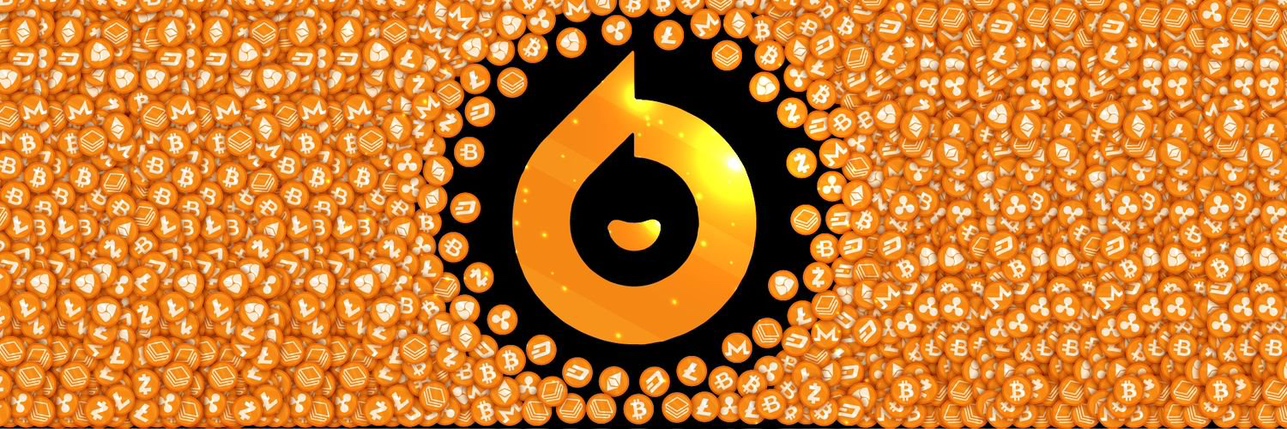
Hedera priceHBAR
HBAR/USD price calculator
Hedera market Info
Live Hedera price today in USD
Do you think the price of Hedera will rise or fall today?
Now that you know the price of Hedera today, here's what else you can explore:
How to buy Hedera (HBAR)?How to sell Hedera (HBAR)?What is Hedera (HBAR)What would have happened if you had bought Hedera (HBAR)?What is the Hedera (HBAR) price prediction for this year, 2030, and 2050?Where can I download Hedera (HBAR) historical price data?What are the prices of similar cryptocurrencies today?Want to get cryptocurrencies instantly?
Buy cryptocurrencies directly with a credit card.Trade various cryptocurrencies on the spot platform for arbitrage.Hedera price prediction
When is a good time to buy HBAR? Should I buy or sell HBAR now?
What will the price of HBAR be in 2026?
In 2026, based on a +5% annual growth rate forecast, the price of Hedera(HBAR) is expected to reach $0.1195; based on the predicted price for this year, the cumulative return on investment of investing and holding Hedera until the end of 2026 will reach +5%. For more details, check out the Hedera price predictions for 2025, 2026, 2030-2050.What will the price of HBAR be in 2030?
About Hedera (HBAR)
About Hedera
Hedera (HBAR) is a public network that leverages the hashgraph consensus algorithm to enable fast, fair, and secure transactions. Unlike traditional blockchain">blockchain technology, Hedera doesn't form a single chain of blocks but instead weaves all transactions into a single whole, ensuring that no data is discarded. This innovative approach allows Hedera to process hundreds of thousands of transactions per second, with consensus latency measured in seconds, making it one of the most efficient and scalable platforms in the distributed ledger space.
The vision of Hedera is to create a trusted, secure, and empowered digital future for all. Its mission revolves around building a safe and private digital community where users can interact with confidence. Hedera aims to provide a platform where individuals can work, play, buy, sell, create, and engage socially with safety and privacy. The emphasis on trust, security, and empowerment reflects Hedera's commitment to fostering a positive digital environment for all users.
Hedera was founded in 2017 by American technologists Leemon Baird and Mance Harmon, who also launched Swirlds Labs. Both founders possess extensive experience in the software development and tech industry, with expertise spanning AI, security, defense, identity, and more. As of August 2023, the Hedera network processes 66,670,036 transactions per day, with an average transaction time of 5.64 seconds.
Resources
Whitepaper: https://hedera.com/hh_whitepaper_v2.1-20200815.pdf
Official website: https://hedera.com/
How Does Hedera Work
Hedera leverages the hashgraph consensus algorithm to enable a decentralized network capable of processing hundreds of thousands of transactions per second. Unlike traditional blockchain, where blocks can be discarded, Hedera incorporates every container of transactions into the ledger, ensuring efficiency and fairness. The system's asynchronous Byzantine Fault Tolerance (aBFT) provides robust security, including resilience to Distributed Denial of Service (DDoS) attacks, and ensures fair access and ordering of transactions.
The governance of Hedera is overseen by a council of up to 39 leading global enterprises, reflecting a diverse range of industries and geographies. This decentralized governance structure ensures that no single member has control, and no small group can exert undue influence. Stability is further ensured through technical controls that validate the pedigree of the ledger and legal controls that prevent unauthorized forks, providing a stable platform for mainstream adoption.
Hedera also emphasizes regulatory compliance, with features like controlled mutability of the network state and the ability to attach additional data to transactions. These features enable compliance with regulations like GDPR and facilitate Know Your Customer (KYC) and Anti Money Laundering (AML) checks. While not open source, Hedera's code is publicly available for review, ensuring transparency and stability through the defensive use of hashgraph software patents.
What is HBAR Token?
HBAR is the native token of Hedera, used to power the network and enable various functionalities. HBAR has a hard cap maximum supply of 50 billion. At the moment, there are 38.24 billion HBAR tokens in circulation.
- Transaction Fees: HBAR is used to pay for transaction fees on the network, ensuring that users contribute to the network's maintenance. The cost per HBAR transaction to be very small, around $0.0001 USD
- Network Security: HBAR tokens are staked by nodes to secure the network, providing incentives for honest behavior.
- Smart Contracts and Decentralized Applications (DApps): Developers can use HBAR to build and deploy smart contracts and DApps on the Hedera network.
- Governance: HBAR also plays a role in governance, allowing token holders to have a say in network decisions.
Conclusion
Hedera represents a significant evolution in the field of distributed ledger technology. By leveraging the hashgraph algorithm, it offers unparalleled performance, security, and fairness. The HBAR token, as an integral part of the ecosystem, facilitates transactions, security, and development on the platform.
It's important to note that like any other cryptocurrencies, Hedera carries its own risks and it's always wise to do your own research and exercise caution while investing.
Bitget Insights




HBAR/USD price calculator
HBAR resources
What can you do with cryptos like Hedera (HBAR)?
Deposit easily and withdraw quicklyBuy to grow, sell to profitTrade spot for arbitrageTrade futures for high risk and high returnEarn passive income with stable interest ratesTransfer assets with your Web3 walletWhat is Hedera and how does Hedera work?
Global Hedera prices
Buy more
FAQ
What is Hedera used for?
What are the disadvantages of HBAR?
How to make money on Hedera?
How to stake Hedera (HBAR)?
How to store Hedera on the Ledger?
Can you live off staking HBAR?
What is the current price of Hedera?
What factors influence Hedera's price?
Is Hedera a good investment right now?
How has Hedera's price performed in the last year?
Where can I buy Hedera?
What is the price prediction for Hedera in 2024?
Does Hedera have a fixed supply, and how does that affect its price?
How do market trends affect the price of Hedera?
What recent news has impacted Hedera's price?
Is Hedera better than other cryptocurrencies in terms of price stability?
What is the current price of Hedera?
What is the 24 hour trading volume of Hedera?
What is the all-time high of Hedera?
Can I buy Hedera on Bitget?
Can I get a steady income from investing in Hedera?
Where can I buy Hedera with the lowest fee?
Related cryptocurrency prices
Prices of newly listed coins on Bitget
Hot promotions
Where can I buy Hedera (HBAR)?
Video section — quick verification, quick trading









